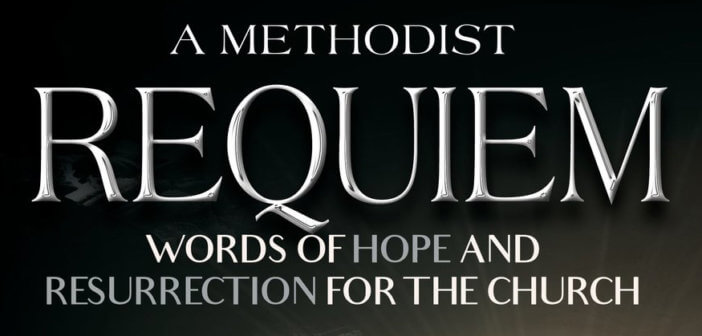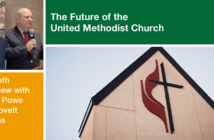Ann Michel of the Lewis Center staff reports on William B. Lawrence’s book A Methodist Requiem that examines the legacy and impact of the church from several different angles and considers what’s at stake in a potential split.
At a time of great concern about the future of United Methodism, William B. Lawrence reflects on the importance of the Methodist witness in A Methodist Requiem: Words of Hope and Resurrection for the Church (General Board of Higher Education and Ministry, 2018.) Examining the legacy and impact of the church from several different angles, the work draws on Lawrence’s knowledge as a historian, his intimate memories of how the congregation he grew up in supported his family and the broader community, an objective sense of what’s at risk in the possibility of schism, and profound faith in the church as an agent of God’s mission.
History
Lawrence first shares his perspective as a church historian, lifting up the immensely significant missional impact of our church in America and around the world, over centuries and still today. It is not something to be taken lightly. He also reminds us that the Methodist movement is not a single unbroken line, but a “series of straying strands, broken branches, divided paths, occasional reconciliations, and enduring divisions” with 80 churches in 133 countries tracing their history to John Wesley. Current divisions over homosexuality come in the wake of previous divides and differences related to race and gender. He credits the manifold accomplishments of the church to the versatility and adaptability of the connectional nature of the Methodist system.
Community
The most poignant part of Lawrence’s book is a deeply personal account of the Methodist (later United Methodist) Church in Alden Station, Pennsylvania — a congregation that nurtured the faith of generations of his family members and knit together people of differing needs, life stories, and socio-economic standings into a complex, flawed, yet life-giving union. It is a testament to how vital congregations strengthen the very core of the communities they serve. But there is an ironic twist to the story as the congregation’s ministry was discontinued two years ago after decades of decline. It is a case study that underscores the urgent need for congregations to adapt to changing circumstances in virtually every type of setting today.
Dissolution
A section of the book entitled “Schemes for Schism” is a wake-up call to anyone with a naïve understanding or cavalier attitude regarding the potential breakup of the United Methodist Church. Lawrence systematically lays out the means by which a split might occur, revealing how messy and complicated a divorce would be, especially questions about how the assets and liabilities of jurisdictions and conferences would be divided. To underscore the point, Lawrence outlines ten reasons why a division would be more procedurally complex than in 1844, when northern and southern Methodism split over slavery.
Mission
Lawrence maintains that the denomination’s current mission statement is too individualistic and too localized, minimizing the role of the broader connection. This critique of the church’s mission may be grounded in assumptions about the agency and clout of the general church that harken back to a bygone era. Nevertheless, Lawrence’s underlying premise — that the United Methodist Church needs a clear sense of missional identity to navigate its current crises — rings true, as does his recommendation that our missional identity must reflect the Wesleyan movement’s twin focus on personal piety and social engagement. It is a theological wellspring uniquely suited to the needs and challenges of our present age.
Hope
A requiem, we learn, is not a death knell despite the term being used that way in common parlance. A requiem expresses hope springing from the eternal presence of God. And while some portions of A Methodist Requiem might seem to convey a tone of indifference to the vicissitudes of institutional change and a resignation to death as the precursor to new life, the book’s overall message is one of hope in the power of our resurrecting God in matters of life and death, death and life.
In Deuteronomy, we are taught that when life and death are set before us, we are commanded to choose life (Deut. 30:19). And A Methodist Requiem provides abundant reason why we must.
A Methodist Requiem: Words of Hope and Resurrection for the Church (2018) is published by the General Board of Higher Education and Ministry of the United Methodist Church. It is available at Cokesbury and Amazon. Author William B. Lawrence is professor of American Church History at the Perkins School of Theology, Southern Methodist University, and research fellow at the Center for Studies in the Wesleyan Tradition at Duke Divinity School.




